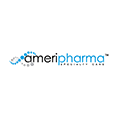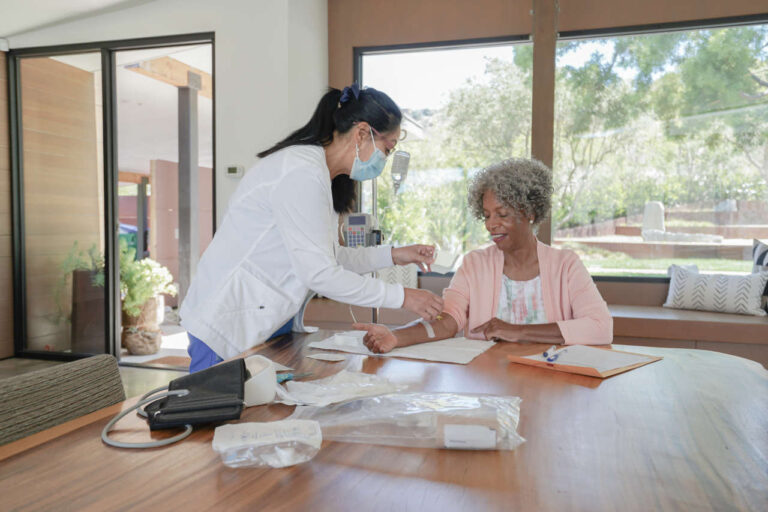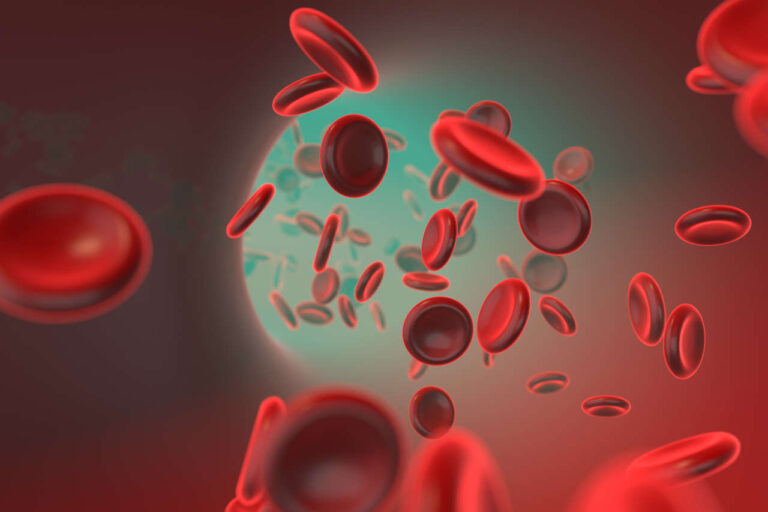
Privigen is a 10 percent liquid human IgG derived from human plasma. It is available in a single, ready-to-use, sterile 10% vial. It is stable at room temperature for the period of its expected lifespan (up to 36 months). This medication has a distribution of IgG subclasses similar to normal serum.
Approximately 99.2 percent of the composition comprises IgG. The remaining 0.8 percent is composed of monomers and dimers. Privigen contains low levels of immunoglobulin A (IgA), typically ≤25 µg/mL (0.025 mg/mL), which may be clinically important for patients with anti-IgA antibodies.
Speak to a Specialist
About Copay AssistancePrivigen is stabilized at a pH of 4.8 by amphiphilic amino acid L-proline (250 mmol/l), which is present in high concentrations in the solution.
This formulation intends to reduce the denaturation, degradation, and aggregation of IgG to the greatest extent possible.
L-proline prevents the formation of excessive amounts of idiotype/anti-idiotype dimers during storage. This act prevents the development of inflammatory reactions following intravenous administration of the compound. It is well established that decreasing IgG dimer formation leads to an improvement in clinical tolerability.
Strict controls are in place to reduce the potential for pathogen transmission through this therapeutic product. These controls include donation control and plasma pool screening.
Manufacturing Process
Privigen’s manufacturing process includes four validated steps:
- Removing/inactivating pathogens using specific clearance principles
- Incubation at pH 4
- Nanofiltration
- Partitioning
The virus and prion elimination capabilities of Privigen IVIG therapy are enough to prevent the transmission of well-known and new pathogens.
Privigen Indications and Uses
Privigen is FDA‑approved for:
- Primary humoral immunodeficiency (PID)
- Chronic immune thrombocytopenic purpura (ITP) in patients aged ≥15
- Chronic inflammatory demyelinating polyneuropathy (CIDP) in adults
This medication boosts the immune system and reduces the risk of infection for people with a weakened immune system.
Doctors use it to treat a variety of conditions. The manufacturer uses normal human blood to create the solution, which contains a high concentration of certain defensive substances (antibodies) that fight against infection.
Current IVIG products show high titers of SARS-CoV-2 IgG, representing IgG from vaccinated and convalescent donors. Note, however, that the use of Privigen for COVID-19 remains an off-label application and is not an FDA-approved indication. IVIG could represent a robust source for administering passive and neutralizing immunity to immunocompromised patients in situations where vaccine-derived immunity is lacking and therapeutic monoclonals are possibly ineffective.
Privigen is also used to increase the number of blood platelets in people with a specific blood disorder. Chronic idiopathic thrombocytopenic purpura (ITP) is one of these disorders. Platelets are a crucial component that help contribute to the formation of blood clots that stop bleeding.
In addition, it may treat specific types of muscle weaknesses. Such weaknesses include:
- Multifocal motor neuropathy
- Nerve disorders such as:
- Peripheral neuropathy
- Chronic inflammatory demyelinating polyneuropathy (CIDP)
According to the manufacturer, doctors can also use it to prevent certain blood vessel disorders in individuals with Kawasaki syndrome.
Other clinically supported uses (per international labels including EMA and NZ data sheet) include: Guillain-Barré Syndrome, myasthenia gravis exacerbations, and Lambert‑Eaton or Stiff‑Person syndromes.
Treatment/Therapy
Chronic Inflammatory Demyelinating Polyneuropathy (CIDP)
Privigen helps alleviate disability and improves the neuromuscular function of CIDP patients.
Chronic Immune Thrombocytopenic Purpura (ITP)
Privigen IVIG infusion therapy increases platelet counts in patients with ITP who are 15 years or older.
Primary Humoral Immunodeficiency (PI)
This liquid is an FDA-approved PI replacement therapy. Examples of primary humoral immune deficiencies are:
- Wiskott-Aldrich syndrome
- Common variable immunodeficiency (CVID)
- X-linked agammaglobulinemia
- Severe combined immunodeficiencies (SCID)
- Congenital agammaglobulinemia
Ask About Privigen Home Infusion
Pediatric Uses
Treatment of CIDP
According to the manufacturer, the medication’s safety and efficiency in CIDP patients under 18 years old are unclear.
Treatment of Chronic ITP (Chronic Idiopathic Thrombocytopenic Purpura)
The safety and efficacy in chronic ITP patients under 15 are unclear.
Treatment of Primary Humoral Immunodeficiency
A study investigated the efficacy and safety of Privigen infusion for PI treatment. The study included 31 participants (12 adolescents and 19 children) who had previously been diagnosed with PI.
The study showed no significant difference in the efficacy and safety of the medication in the adult and pediatric tested samples. However, there was no data about its efficiency and safety in patients under three years old.
Uses in Specific Populations
Use in Lactating Mothers
Risk Summary
The use of Privigen in lactating mothers has not been evaluated. Breastfeeding has numerous developmental and health benefits. Mothers should consider the clinical necessity and possible side effects on the breastfed child.
Use In Pregnancy
Risk Summary

No human data is available to determine whether or not there is a drug-related risk in pregnancy.
The medication has not been subject to animal reproduction studies as of this writing. It is unknown if Privigen medication will cause harm to the developing fetus or impair women’s ability to reproduce.
After 30 weeks of pregnancy, immunoglobulins from the mother’s circulation begin to cross the placenta in more significant quantities.
During pregnancy, doctors should prescribe Privigen IVIG therapy only as needed. The background risk of significant congenital disabilities and miscarriage in clinically recognized pregnancies in the United States is 2% – 4% and 15% – 20%, respectively.
Is Privigen Right for You?
Prescribing Information
Dosing for CIDP (Chronic Inflammatory Demyelinating Polyneuropathy)
The recommended loading dose is 20 ml/kg (2 g/kg) over 2 to 5 days. Based on the patient’s weight, Privigen maintenance infusions can be given as a single dose or two doses every three weeks.
There is no research on maintenance therapy after six months.
The manufacturer recommends an initial infusion rate of 0.005 ml/kg/min (0.5 mg/kg/min). In some cases, the infusion rate can be increased to 0.08 ml/kg/min (8 mg/kg) if tolerated.
The medication should be given at the lowest possible rate to patients at risk of volume overload, thrombosis, or renal dysfunction.
Get Privigen Prior Authorization
Dosing for Chronic Immune Thrombocytopenic Purpura (ITP)
Chronic ITP patients should receive a dose of 10 ml/kg (1 g/kg) over two days for a total of 2 g/kg.
Doctors also prescribe Privigen IVIG therapy for the treatment of acute ITP. In patients at risk of volume overload, acute kidney injury, hemolysis, or thrombosis, it is crucial to weigh the risks vs. benefits of treatment.
Dosing for Primary Humoral Immunodeficiency (PI)

Patients with PI may require different levels of immunoglobulin therapy because the half-life of Privigen IgG varies significantly from one patient to the next.
With the help of clinical response monitoring, it is possible to determine the appropriate dose.
Doctors prescribe it for patients with a dose of 2 to 8 ml/kg (200 to 800 mg/kg) every 3 to 4 weeks.
If the patient misses a dose, give them the missed dose, then resume the next infusion every 3 or 4 weeks from the missed dose.
Doctors should tailor the dosage to each individual to achieve desired serum IgG levels and clinical responses.
Infusion Rate Chart
Recommended Dosage of Privigen
| Indication | Dosage | Privigen infusion Rate (Initial) | Privigen infusion Rate as tolerated (Maintenance) |
|---|---|---|---|
| Privigen infusion Rate as tolerated (Maintenance) | Loading Privigen dosing: 20 ml/kg (2 g/kg) administered in half doses over a period of 2 to 5 days. Maintenance privigen dosing: 10 mL/kg (1 g/kg) administered in 1 to 2 infusions on consecutive days, every 3 weeks | 0.005 ml/kg/min (0.5 mg/kg/min) | 0.005 ml/kg/min (0.5 mg/kg/min) |
| Chronic Immune Thrombocytopenic Purpura (ITP) | 10 ml/kg (1 g/kg) for 2 consecutive days | 0.005 ml/kg/min (0.5 mg/kg/min) | Increase to 0.04 ml/kg/min (4 mg/kg/min) |
| Primary Immunodeficiency (PI) | 2-8 ml/kg (200-800 mg/kg) every 3 - 4 weeks | 0.005 ml/kg/min (0.5 mg/kg/min) | Increase to 0.08 ml/kg/min (8 mg/kg/min) |
Common Side Effects
Common Privigen side effects include:
- Headache
- Nausea
- Flushing (tingly feeling, redness, or warmth)
- Fever
- Minor chest pain
- Tired feeling
- Dizziness
- Low levels of iron in the blood (anemia)
- Chills
- Fatigue
- Vomiting
- Back or joint pain
- Muscle cramps
Contraindications of Privigen Infusion
- Patients with IgA deficiency or anti-IgA antibodies should not receive infusions.
- Infusion should not be used in patients with hyperprolinemia because the solution contains the stabilizer L-proline.
- Previous severe systemic or anaphylactic reactions are contraindications.
Ask an IVIG Specialist about Side Effects
Infusion Side Effects
Hypersensitivity
Privigen IVIG infusions may cause severe hypersensitivity reactions.
Immediately discontinue the infusion and seek appropriate medical attention if you experience an allergic reaction.
Epinephrine should be available immediately to treat acute hypersensitivity reactions. Although this immunoglobulin solution contains trace amounts of IgA (25 mcg/ml), it is not toxic. Anti-IgA antibodies may develop in individuals with IgA deficiency due to receiving blood components with IgA. Anaphylactic reactions are also possible (including anaphylaxis and shock).
Privigen may cause severe anaphylactic and hypersensitivity reactions in patients with known IgA antibodies.
Transmissible Infectious Agents
Because the medication’s immunoglobulin comes from human plasma, it can spread:
- Infectious agents (e.g., viruses)
- The Creutzfeldt-Jakob disease agent
- Variant Creutzfeldt-Jakob disease agent
Virus inactivation/removal steps during the manufacturing process are beneficial in reducing the likelihood of viral transmission.
Interference with Laboratory Tests
The misinterpretation of serological test results is possible. The reason is that immunoglobulin preparations contain passively transferred antibodies.
Volume Overload
Doctors should consider the risks vs. benefits of high-dose Privigen infusions for CIDP and ITP patients at risk of volume overload, acute kidney injury, hemolysis, and thrombosis.
Hypertension
Some patients receiving Privigen IVIG infusions experienced elevations of systolic blood pressure to 180 mm Hg and diastolic blood pressure to 120 mm Hg (hypertensive urgency). After a few hours, blood pressure returned to normal, either following observation or by modifying oral antihypertensive therapy.
Patients with a history of hypertension were more likely than other patients to have elevated blood pressure. Regardless of whether a patient has a history of hypertension or is currently taking antihypertensive medication, blood pressure should be monitored before, during, and after infusion.
Hemolysis
Privigen immunoglobulins may contain hemolysin-like blood group antibodies that coat red blood cells in vivo (RBCs). This component may result in a positive DAT (Coombs’ test) and hemolysis. Increased RBC sequestration can cause delayed hemolytic anemia after Privigen IVIG therapy.
Privigen infusion therapy is not associated with acute intravascular hemolysis. Studies link this medication to disseminated intravascular coagulation (DIC) and severe hemolysis-related acute renal failure/acute renal dysfunction. High doses (e.g., 2g/kg) given in a single dose or over several days is a notable risk factor. Factors other than underlying inflammatory conditions (elevated erythrocyte sedimentation rate or CRP, C-reactive protein), may increase the risk of hemolysis after administration.
Reports show that hemolysis can occur as a side effect of the treatment for various conditions, including chronic ITP, CIDP, and PI.
Physicians should closely monitor patients with the above risk factors, anemia, and cardiovascular or pulmonary compromise for hemolysis-related symptoms.
Higher-risk patients should have appropriate laboratory testing performed before treatment initiation, approximately 36 hours after the Privigen infusion, and again 7 to 10 days later.
Doctors should also perform other tests to monitor the treatment. Clinically suspected hemolysis and significant hemoglobin or hematocrit decrease require additional laboratory testing to confirm the diagnosis. It is essential to perform adequate cross-matching in patients who develop hemolysis and clinically substantial anemia due to Privigen IVIG therapy. This is to avoid the exacerbation of the existing hemolysis.
Thrombosis
Privigen immune globulin products can result in thrombosis as a side effect.
Risk factors may include the following:
- Cardiovascular risk factors
- Hyperviscosity
- Advanced age
- Indwelling central vascular catheters
- Prolonged immobilization hypercoagulable conditions
- Use of estrogens
- History of venous or arterial thrombosis
- Hypercoagulable conditions
Thrombosis can occur even without known risk factors. Doctors should test patients who are at risk for hyperviscosity.
Such patients are people with:
- Cryoglobulins
- Fasting chylomicronemia
- Monoclonal gammopathies
- Significantly elevated triglycerides
Thrombosis-prone patients should receive the medication at the lowest effective dose and infusion rate.
Before administering Privigen, make sure that the patients are adequately hydrated. Doctors should closely monitor patients at risk for thrombosis and hyperviscosity.
Aseptic Meningitis Syndrome (AMS)
Privigen and other human immune globulin products may cause AMS, a rare complication.
AMS usually manifests itself several hours to 2 days after receiving Privigen IVIG treatment. Patients experienced complete recovery within a few days of treatment discontinuation, with no complications.
The following are the symptoms of AMS:
- Nausea
- Vomiting
- Painful eye movements
- Severe headache
- Photophobia
- Fever
- Drowsiness
- Nuchal rigidity
Despite high pleocytosis and protein levels in CSF, culture results are consistently negative.
Whenever these symptoms are present, patients should be subjected to a comprehensive neurological examination, including CSF studies, to rule out any other possible causes of meningitis.
Acute muscle syndrome may occur in patients receiving high doses of Privigen (2g/kg) and rapid infusions.
Increased Serum Viscosity, Hyponatremia, and Hyperproteinemia
High serum viscosity, hyponatremia, and hyperproteinemia are all possible side effects of Privigen immunoglobulin IV products following treatment. It is most likely that the hyponatremia is pseudo hyponatremia, as evidenced by decreased serum osmolality or an increase in the osmolar gap.
It is very important to differentiate between pseudo-hyponatremia and true hyponatremia because treating hyponatremia can cause volume loss, increased risk of thromboembolic events, and increased serum viscosity.
Transfusion-Related Acute Lung Injury (TRALI)
Noncardiogenic pulmonary edema is a possible side effect of Privigen.
Physicians can distinguish treated respiratory distress syndrome (TRDS) by the presence of significant respiratory distress syndrome (DRS) symptoms and pulmonary edema, hypoxia, and fever. Symptoms usually appear 1 to 6 hours after treatment.
Doctors should closely monitor acute pulmonary reactions. Per the manufacturer’s instructions, if TRALI is suspected, physicians should test the product and the patient’s serum for anti-neutrophil and anti-human leukocyte antigen (HLA) antibodies. TRALI is a condition doctors can effectively manage with oxygen therapy in conjunction with adequate ventilation support.
Get Your Privigen IVIG Dose
At-Home InfusionAcute Renal Failure and Renal Dysfunction
Privigen immunoglobulin IV products in patients predisposed to renal dysfunction/acute renal failure can result in osmotic nephrosis, acute renal failure, and even death.
Renal dysfunction and acute renal failure are more common in patients receiving intravenous immunoglobulin with sucrose than in those not receiving such products. This medication does not contain sucrose in any form.
Because of the hemolysis caused by the drug, it is possible to develop acute renal failure as a side effect. To prevent this, ensure that patients are not dehydrated and monitor their renal function, including serum creatinine and BUN, before and after the initial Privigen infusion. Doctors should continuously monitor the renal function and urine output of patients at risk for ARF (acute renal failure).
You should consider stopping the infusion if your renal function begins to deteriorate. Doctors should assume patients are genetically predisposed to acute renal failure or have pre-existing renal insufficiency. Therefore, they should infuse the medication slowly.
Drug Interactions
 Live Virus Vaccines
Live Virus Vaccines
Immunoglobulin administration may alter the response of live vaccines. Such vaccines include varicella, rubella, mumps, measles, and more.
Notify the immunizing physician of any current Privigen IVIG therapy to allow for the implementation of appropriate preventive measures.
Prices
Privigen Cash Cost
| Quantity | Privigen cost (Per unit) | Privigen Price |
|---|---|---|
| 400 milliliters | $15.92 | $6,367.46 |
| 200 milliliters | $15.94 | $3,188.48 |
| 100 milliliters | $15.99 | $1,598.99 |
| 50 milliliters | $16.09 | $804.25 |
The cost of a 50 ml vial 10% solution ranges from approximately $804 to $904. The cash prices vary based on the dispensing pharmacy.
Prices through insurance plans are different, as they differ based on what type of coverage the patient has.
Privigen Copay Assistance
Low-income, uninsured, or underinsured individuals who meet specific criteria can benefit from PAPs (patient assistance programs). Pharmaceutical companies frequently provide free or discounted medications as part of their sponsorship to those who qualify.
Each program has its own set of eligibility requirements, which vary.
The following are some foundations providing copay assistance:
- Patient Access Network Foundation (PAN)
- HealthWell Foundation Copay Program
- My Source CSL Behring Patient Assistance Program
- CSL Behring IgIQ Program
These copay assistance or patient assistance programs are only for US residents. Visit our Privigen copay assistance page if you are interested in receiving financial assistance for Privigen.
Get Copay Assistance
Speak to a SpecialistFAQs
What Is Privigen Used to Treat?
IVIG is used to treat a variety of conditions, including:
- Certain infections
- Primary humoral immunodeficiency
- Chronic idiopathic thrombocytopenic purpura (ITP)
- Multifocal motor neuropathy
- Peripheral neuropathy
- Chronic inflammatory demyelinating polyneuropathy (CIDP)
- Certain blood vessel disorders (Kawasaki syndrome)
Does Privigen IVIG Therapy Cause Weight Gain?
There is currently no evidence that this treatment can cause weight gain.
Can It Cause Blood Clots?
Privigen is used to treat platelet disorders like chronic immune thrombocytopenic purpura. However, the IVIG infusion increases the platelet count significantly. Therefore, a clot may form, especially in older people.
To ensure this medication is safe for you, inform your doctor if you have any of the following:
- Long-term bed rest
- Blood circulation problems
- Heart problems
- History of a blood clot
- Diabetes
- History of strokes
- Sepsis
- Kidney disease
- History of estrogen use (hormone replacement therapy or birth control pills)
Is It FDA-Approved?
Yes, Privigen is an FDA-approved drug for the treatment of the following conditions:
- Chronic inflammatory demyelinating polyneuropathy (CIDP) in adults
- Chronic immune thrombocytopenic purpura (ITP) in patients aged 15 and older
- Primary humoral immunodeficiency (PI)














